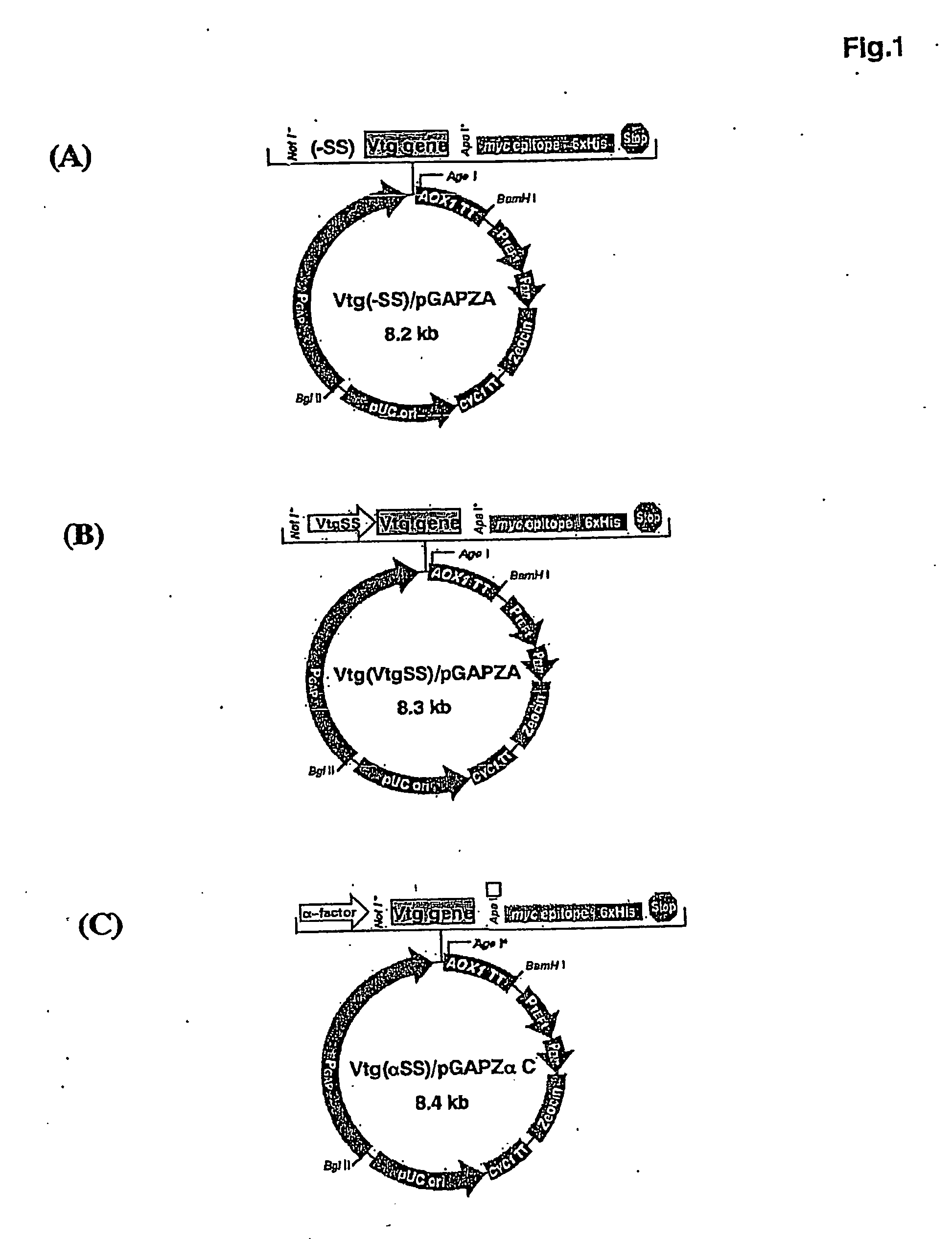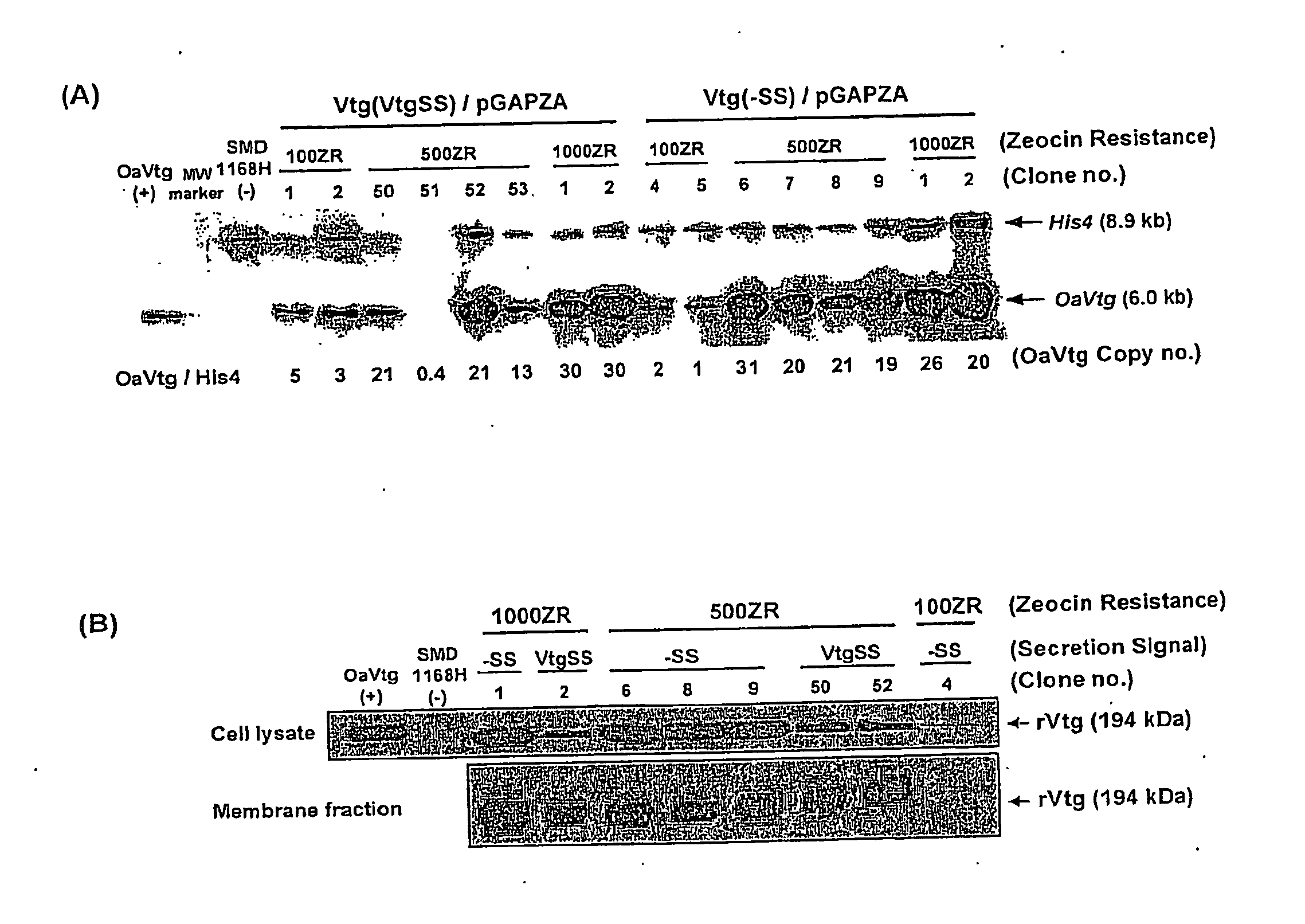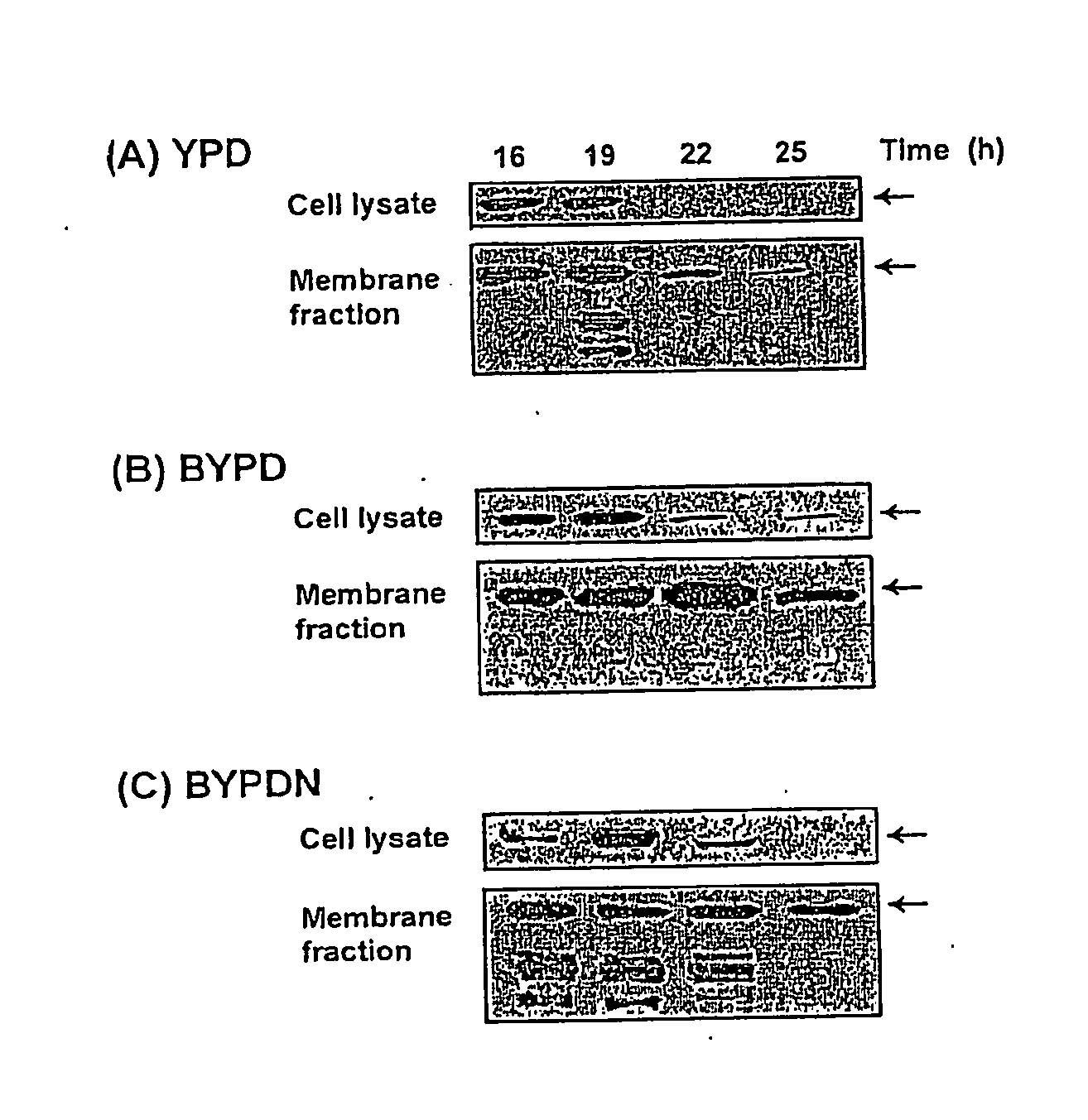Recombinant vitellogenin enriched feed
a technology of recombinant vitellogenin and enriched feed, which is applied in the field of feed technology and recombinant technology, can solve the problems of inconsistency in batch nutritional value and high mortality at the early stage of larval development, and achieve optimal oviparous larval survival rate and/or oviparous broodstock egg quality
- Summary
- Abstract
- Description
- Claims
- Application Information
AI Technical Summary
Benefits of technology
Problems solved by technology
Method used
Image
Examples
example 1
Construction of the Expression Vectors & Transformation of Pichia pastoris
[0058]P. pastoris vectors, pGAPZA and pGAPZαC, were from Invitrogen (USA). The plasmids harbour a dominant selectable shuttle marker, Zeocin, which allows selection of both E. coli and P. pastoris transformants. While pGAPZA contains no secretion signal, pGAPZαC carries S. cerevisiae α-factor secretion signal sequence downstream of GAP promoter. The constitutive GAP promoter allows a simplified fermentation regime over the methanol-inducible AOX1 promoter by avoiding the use of methanol, which is flammable and is potentially toxic for subsequent applications.
[0059] The tilapia, O. aureus, Vtg cDNA (GenBank pOAVtg1 sequence AF017250) was inserted in the sense orientation, downstream of the GAP promoter of pGAPZA and pGAPZαC to create three constitutive Vtg expression vectors. Prior to subcloning into the GAP vectors, the native TAA stop codon of the Vtg gene was altered to introduce an ApaI restriction site t...
example 2
Southern and Western Analyses of Vtg Gene Copy Number and Expression Levels
[0065] It has been reported that the expression levels of a recombinant protein in Pichia can be enhanced dramatically with multicopy transformants (Vassileva et al., 2001). Thus, we investigated the effect of gene copy number on the expression efficiency of the GAP-regulated rVtg constructs. The putative recombinant clones harboring multiple copies of the expression cassette were isolated by selection with increasing concentrations of Zeocin.
[0066] Yeast transformants were spheroplasted using zymolyase, and lysed using 1% sodium dodecyl sulfate (SDS). Genomic DNA was isolated by ethanol precipitation and resuspended in TE buffer, pH 7.5. The AvrII-digested genomic DNA samples (10 μg each) were electrophoresed on a 0.6% agarose gel and transferred onto 0.45 μm nylon membrane (Pall Biodyne, USA). The Southern blot was hybridised with a DIG-labelled O. aureus Vtg XhoI-XbaI fragment of 926 bp, excised from pOa...
example 3
Effects of Media Composition on the Expression Level and Integrity of rVtg
[0071] The expression levels of rVtg in cultures of clone #6 containing the Vtg(—SS) / pGAPZA plasmid were determined in three different YPD-based media: (a) YPD containing 1% yeast extract, 2% peptone and 2% dextrose, pH 6.0; (b) buffered YPD (BYPD) containing YPD supplemented with 100 mM phosphate buffer, pH 6.0; and (c) BYPDN containing BYPD, 1.34% yeast nitrogen base and 4×10−5% biotin, pH 6.0. Single colonies of the yeast were pre-cultured in 10 ml of each of the 3 media until OD600nm of ˜7.0. One ml of this starter culture was inoculated into 200 ml fresh media in a 1 L shake flask for overnight incubation at 23° C., with continuous shaking at 260 rpm. The optimal time for the growth of clones was also monitored at 25° C., 28° C. and 30° C. From this culture, aliquots of 30 ml were harvested at 16, 19, 22 and 25 hr time points. The cells were pelleted at 5000 g for 5 min. The culture supernatant was set a...
PUM
| Property | Measurement | Unit |
|---|---|---|
| Mass | aaaaa | aaaaa |
| Mass | aaaaa | aaaaa |
| Mass | aaaaa | aaaaa |
Abstract
Description
Claims
Application Information
 Login to View More
Login to View More - R&D
- Intellectual Property
- Life Sciences
- Materials
- Tech Scout
- Unparalleled Data Quality
- Higher Quality Content
- 60% Fewer Hallucinations
Browse by: Latest US Patents, China's latest patents, Technical Efficacy Thesaurus, Application Domain, Technology Topic, Popular Technical Reports.
© 2025 PatSnap. All rights reserved.Legal|Privacy policy|Modern Slavery Act Transparency Statement|Sitemap|About US| Contact US: help@patsnap.com



